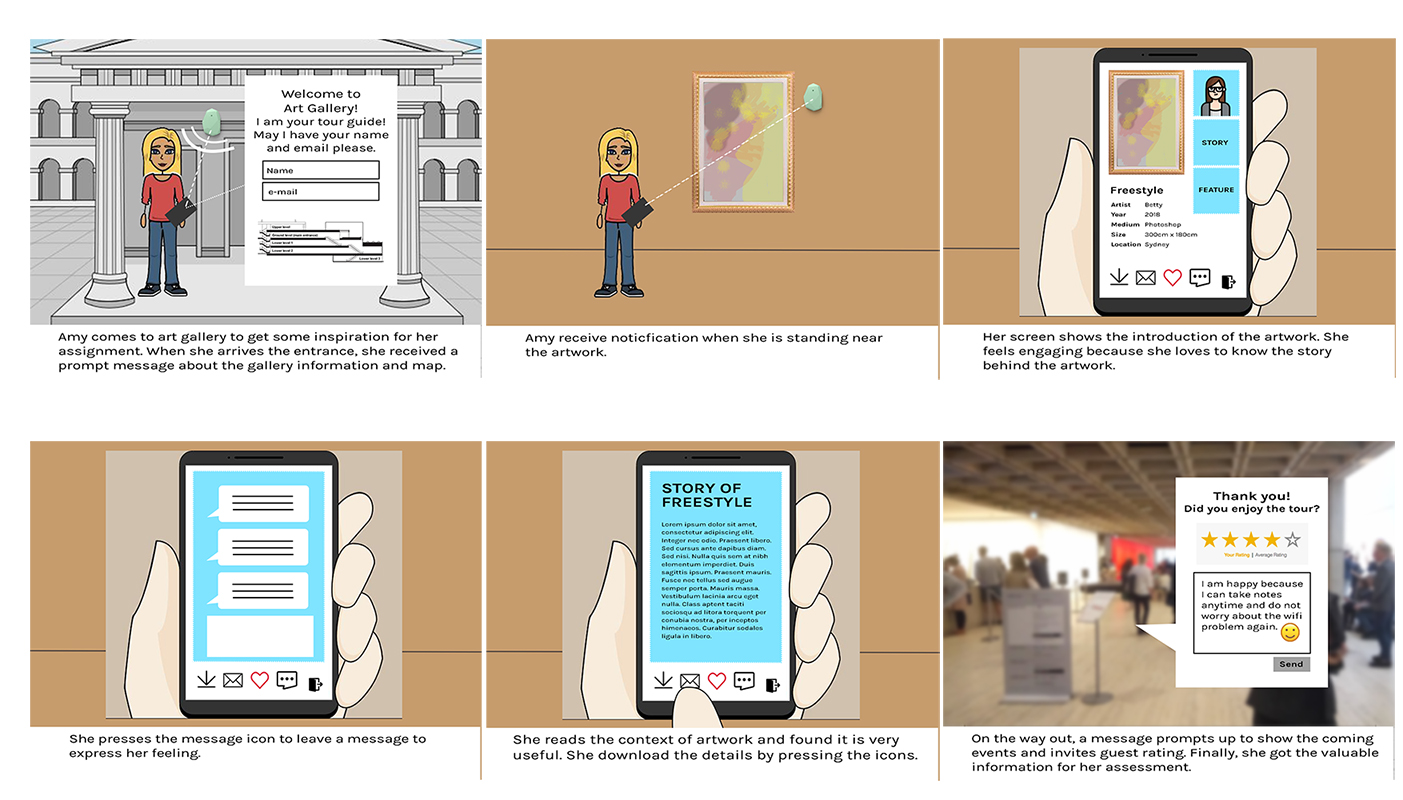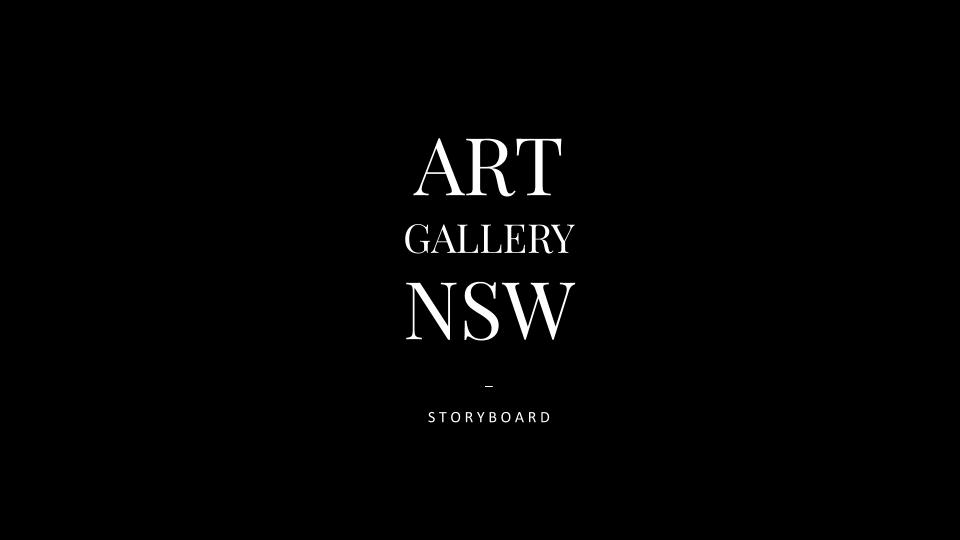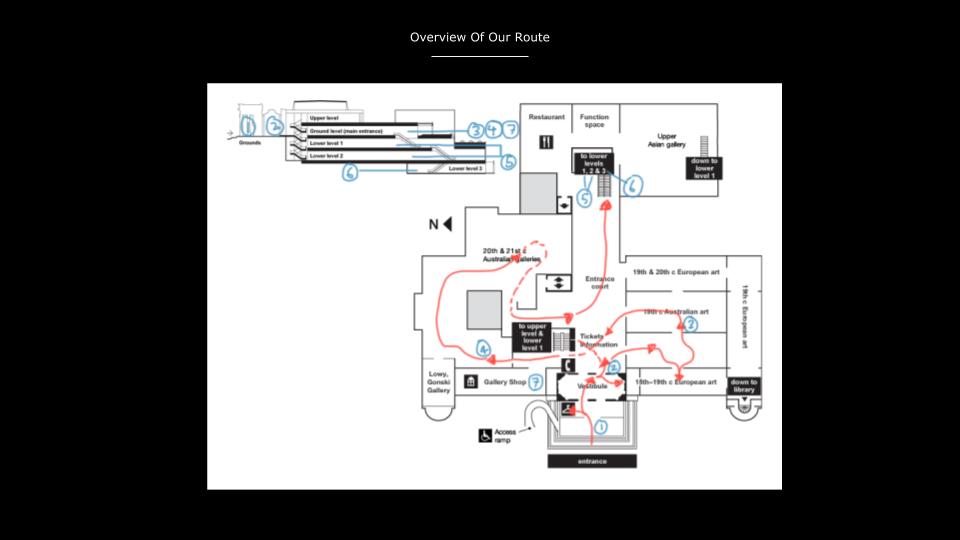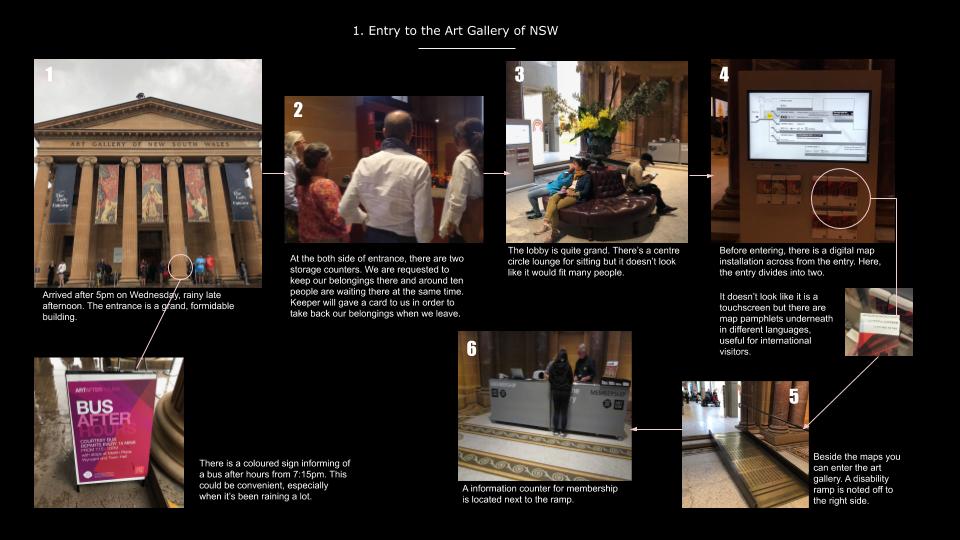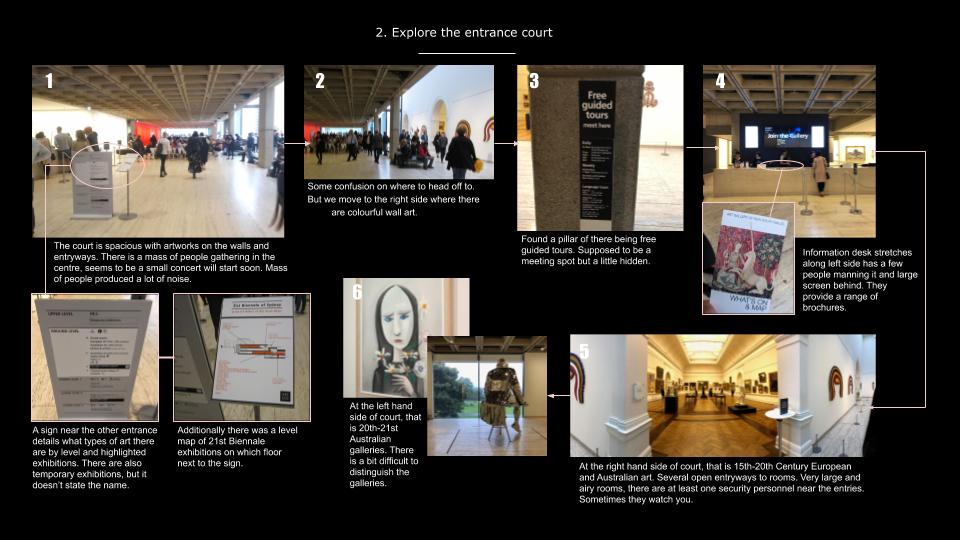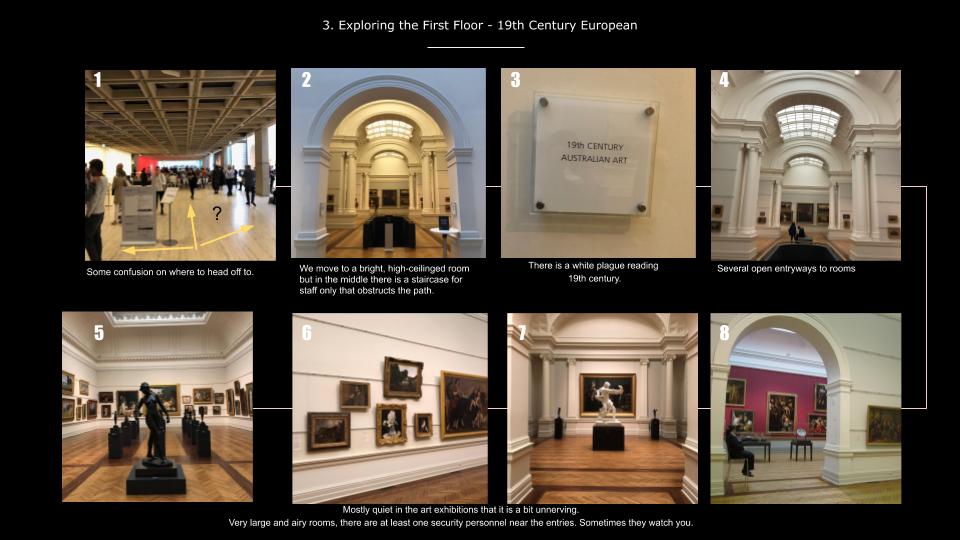UX DESIGN > Art Gallery NSW
BACKGROUND RESEARCH
Our objective:
This project is carried out in a group of 4. Our group prepared and performed a
context-mapping research study about user experience in the Art Gallery of New South Wale.
As the key deliverable of this research, our group will prepare a research visualisation summarising the
user insights we have gathered.
RESEARCH METHODS
Target group: Student age 20-30
Invited participants: 6
STEP 1: SENSITISING BOOKLET
The topic we will discuss in the booklet is “Experiences of places”, the goal is to prime the participants on talking about their favourite places. This will also give insight on why people like going to certain places. The booklet will have a range of short daily activities over the course of 7 days leading up to the session to help them start thinking about what they do when they go somewhere and what they feel.
Invited participants: 6
STEP 1: SENSITISING BOOKLET
The topic we will discuss in the booklet is “Experiences of places”, the goal is to prime the participants on talking about their favourite places. This will also give insight on why people like going to certain places. The booklet will have a range of short daily activities over the course of 7 days leading up to the session to help them start thinking about what they do when they go somewhere and what they feel.
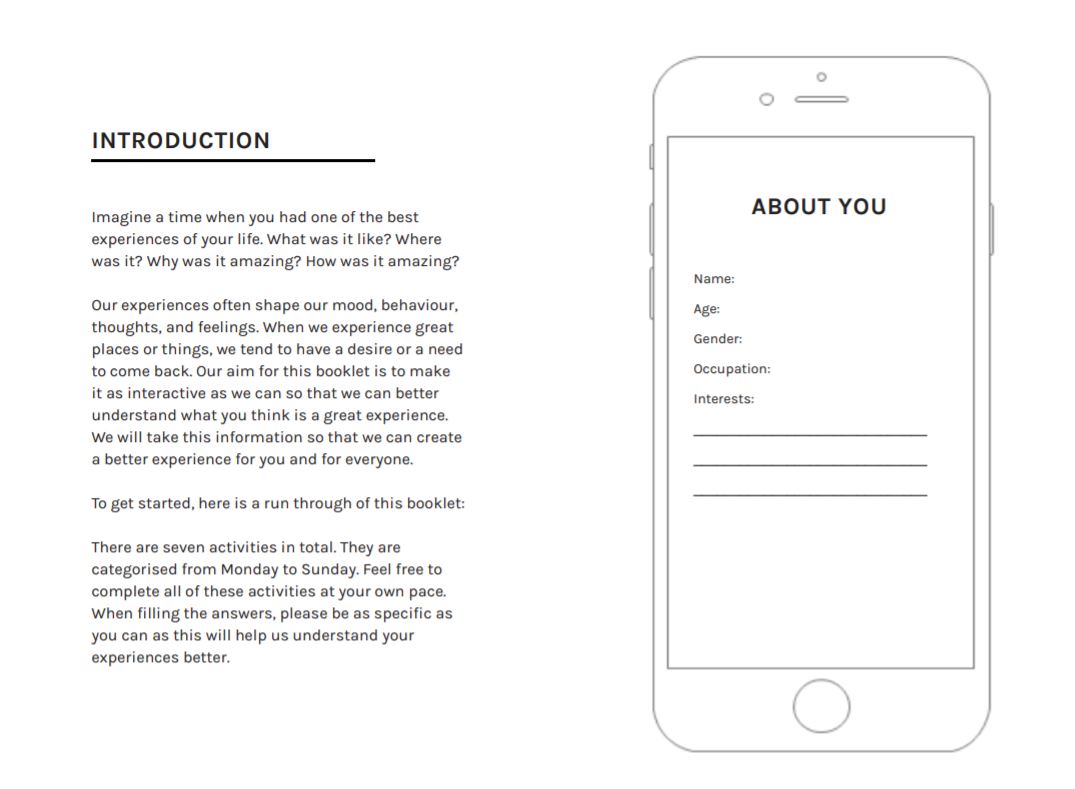
STEP 2: GENERATIVE SESSION
Introduction and Warm-up → Collage activity → Discussion of collage → Cognitive mapping activity → Discussion → Discussion of unanswered questions → End
For the generative session we will focus on their ideas and experience of the Art Gallery of NSW or similar places. Questions that will be answered include: How is your Art gallery experience? What are your good and bad experiences; your likes and dislikes?
To guide this session, we will use the following make and say tools - COLLAGES (AXE, past-present, like-dislike format) and COGNITIVE MAPS (timelines). They will be asked to create an image and text collage of their ideas of the gallery, followed by an icon-based, emotive timeline of their gallery visit with stickers, as explored in Stappers and Sanders experiments using generative techniques.
Introduction and Warm-up → Collage activity → Discussion of collage → Cognitive mapping activity → Discussion → Discussion of unanswered questions → End
For the generative session we will focus on their ideas and experience of the Art Gallery of NSW or similar places. Questions that will be answered include: How is your Art gallery experience? What are your good and bad experiences; your likes and dislikes?
To guide this session, we will use the following make and say tools - COLLAGES (AXE, past-present, like-dislike format) and COGNITIVE MAPS (timelines). They will be asked to create an image and text collage of their ideas of the gallery, followed by an icon-based, emotive timeline of their gallery visit with stickers, as explored in Stappers and Sanders experiments using generative techniques.
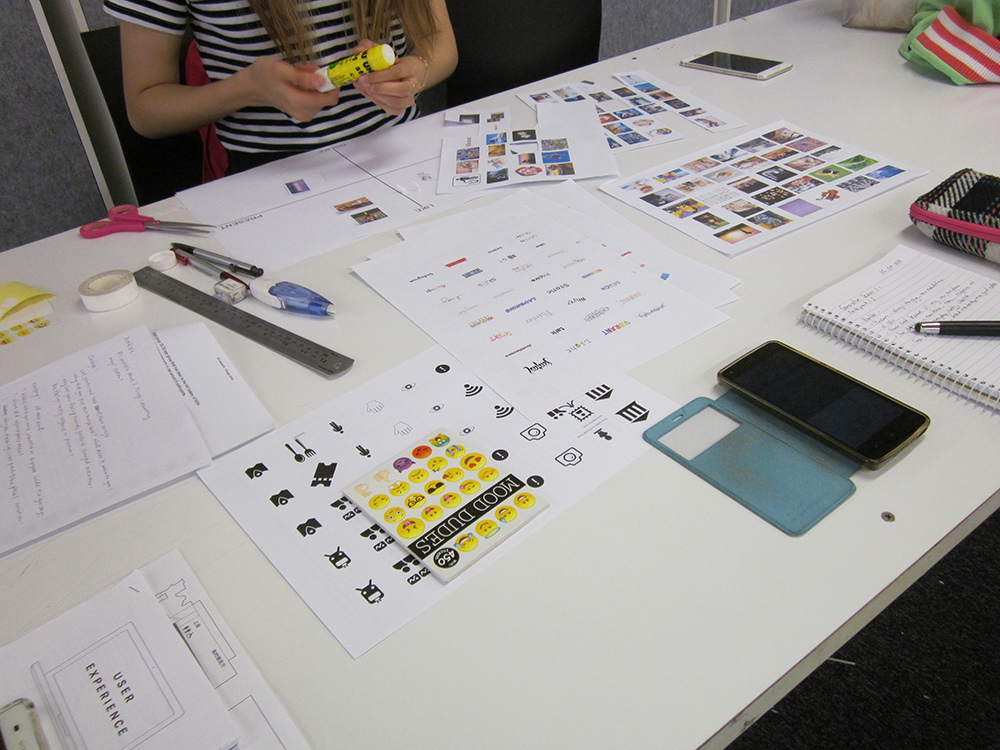
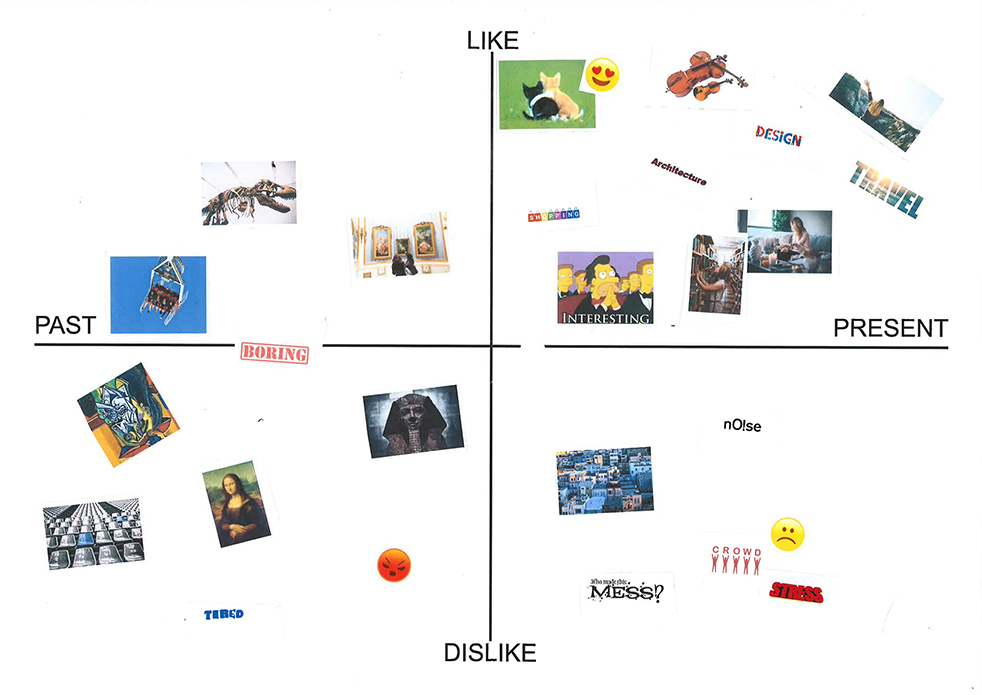
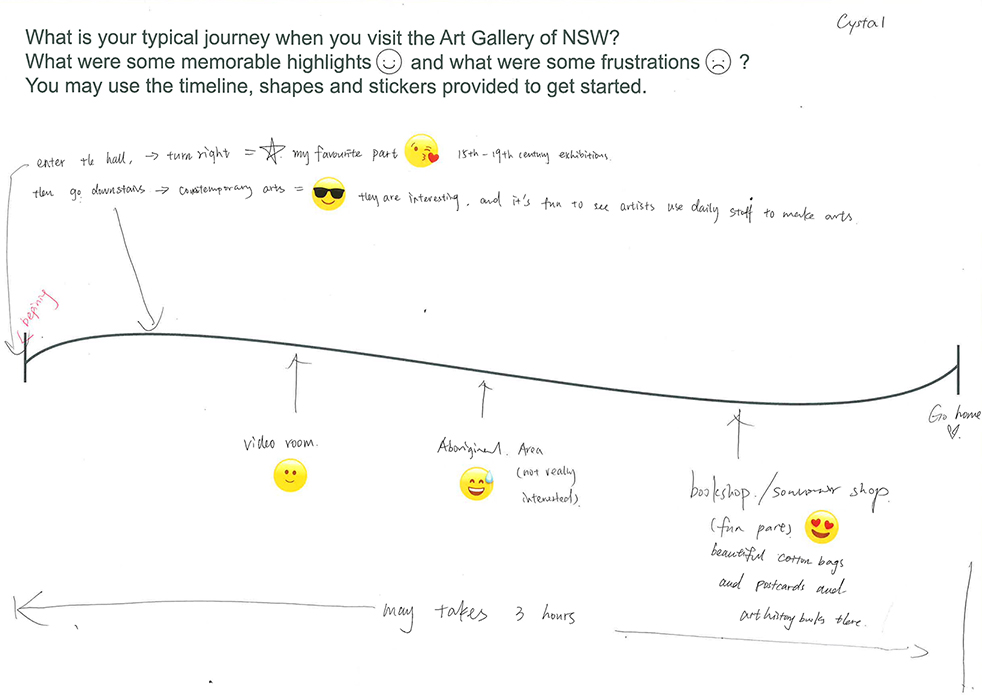
Image: Collage activity
Image: Cognitive activity
DATA ANALYSIS
Prior to the data analysis session, we each created a page of statement cards. Statement cards will be created through selecting similar quotes and placing them under an overarching statement that our participants’ have expressed through those quotes.
The group data analysis session will involve affinity diagramming using the statement cards technique to draw out relations and groups of themes of the transcribed data. Afterwards we will combine the topics from the statement cards into a combined affinity diagram of the overall themes and sub-themes found through the statement cards.
Prior to the data analysis session, we each created a page of statement cards. Statement cards will be created through selecting similar quotes and placing them under an overarching statement that our participants’ have expressed through those quotes.
The group data analysis session will involve affinity diagramming using the statement cards technique to draw out relations and groups of themes of the transcribed data. Afterwards we will combine the topics from the statement cards into a combined affinity diagram of the overall themes and sub-themes found through the statement cards.
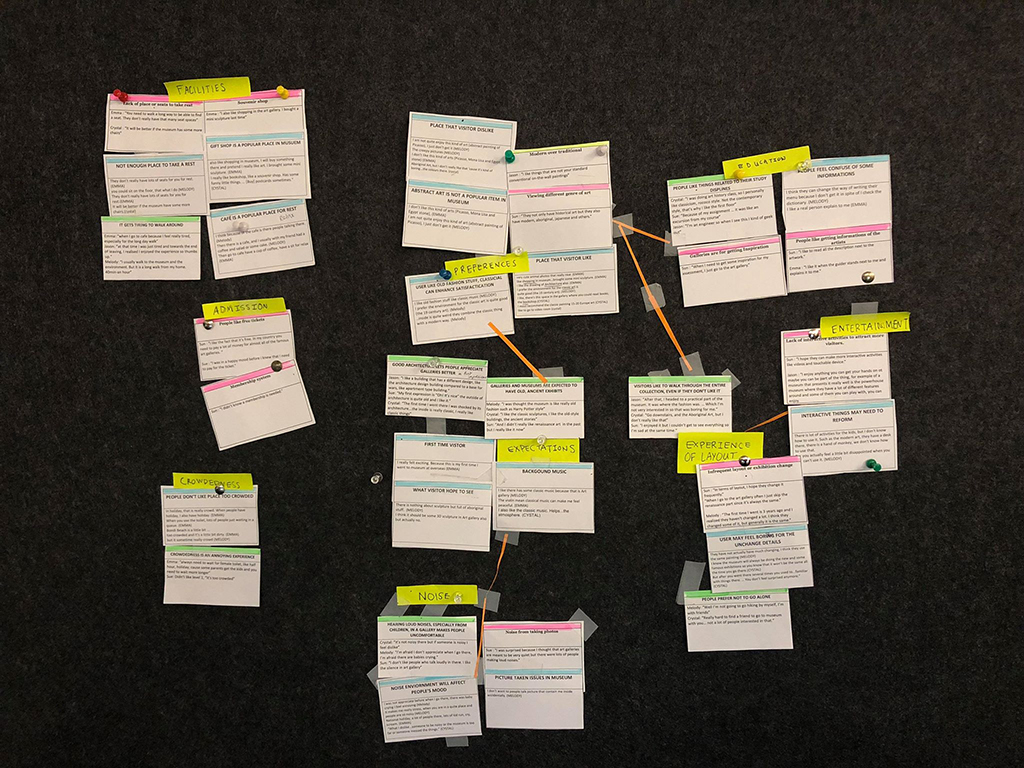
RESEARCH VISUALISATION POSTER
Our visualisation functioned as a stand-alone deliverable that captures the most important insights from our research, communicates these effectively to viewers unfamiliar with the research, and helps the viewer to empathise with our target group.
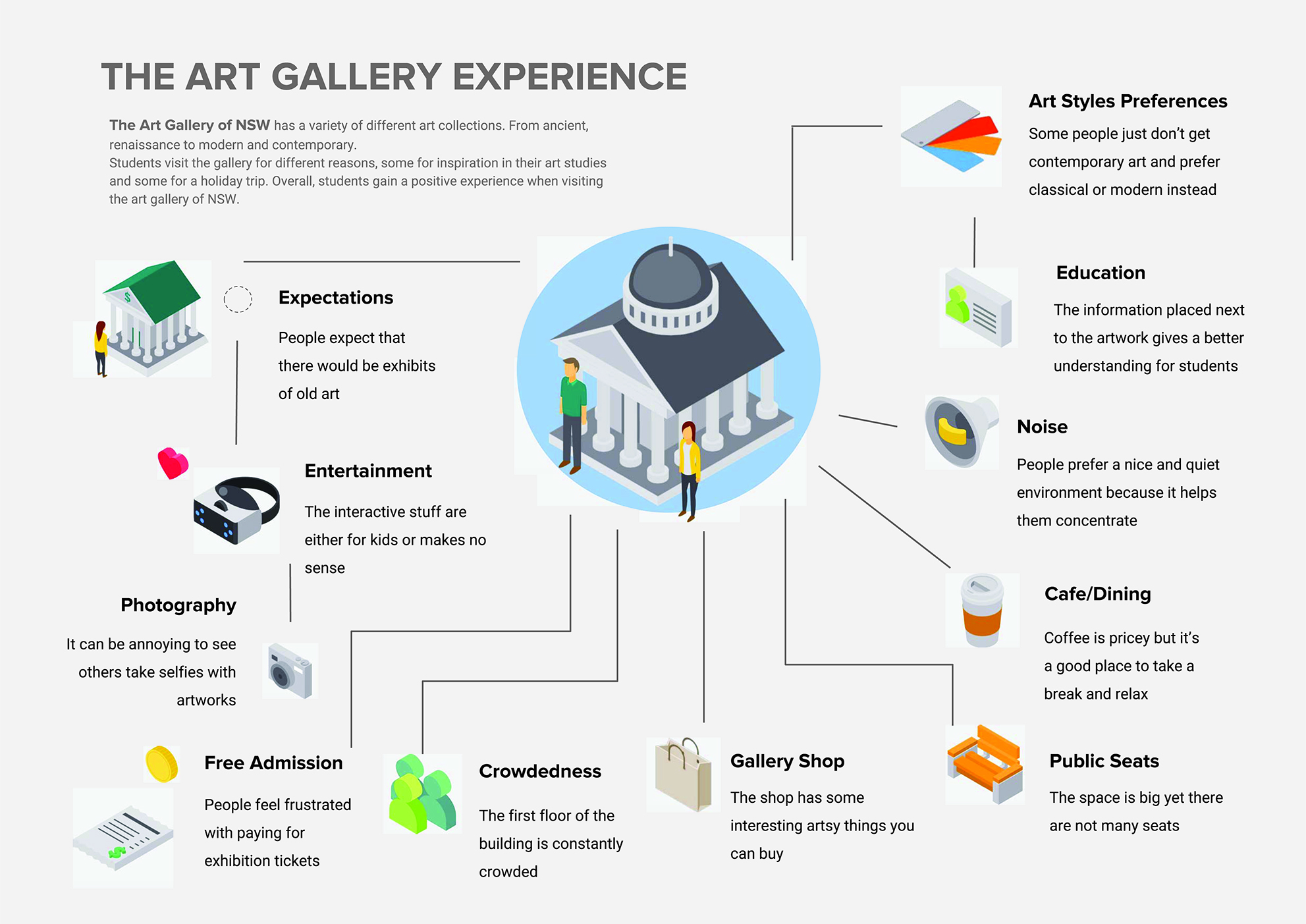
DESIGN CONCEPTS
STORYBOARD ONE (LEAP MOTION) : The Art gallery of NSW is Sydney's most iconic art gallery with Australian art and European art. The importance of art museum is not only to introduce Australian culture such as aboriginal people, architecture, Australian art, photography or contemporary arts to foreign tourists, and to enhance the country’s image. It is also important for teachers and students in local primary and secondary schools and even universities. Because it can improve the level of educa tio n and culture of Australian art of national citizen. However, in our observations, although there are variety of precious artworks in the museum, but they are lack of introduction and attractive information about the artworks . Our objective is to enhance user engagement by offering visitors the ability to learn new material through interactive activities and immersive educational experiences without disturbing the existing environment and collection that the gallery currently offers. The purpose of our goa l is to efficiently engage people through technology by captivating them to learn and strengthen their knowledge and understanding of the current art and collections i n t he gallery . Our target audience are mainly University students but also for other people who need to learn. Therefore, in storyboard one, I consider the students need something more interesting and innovative, that would attract them more engage with the artwork. Leap motion control by hand gesture. It can utilize the extra vacancy from the centre of the gallery. It has four screens that can be used by multiple people at the same time. Inside the content, it shows all the details about the artwork such as story, features and introduction of artist. Storyboard
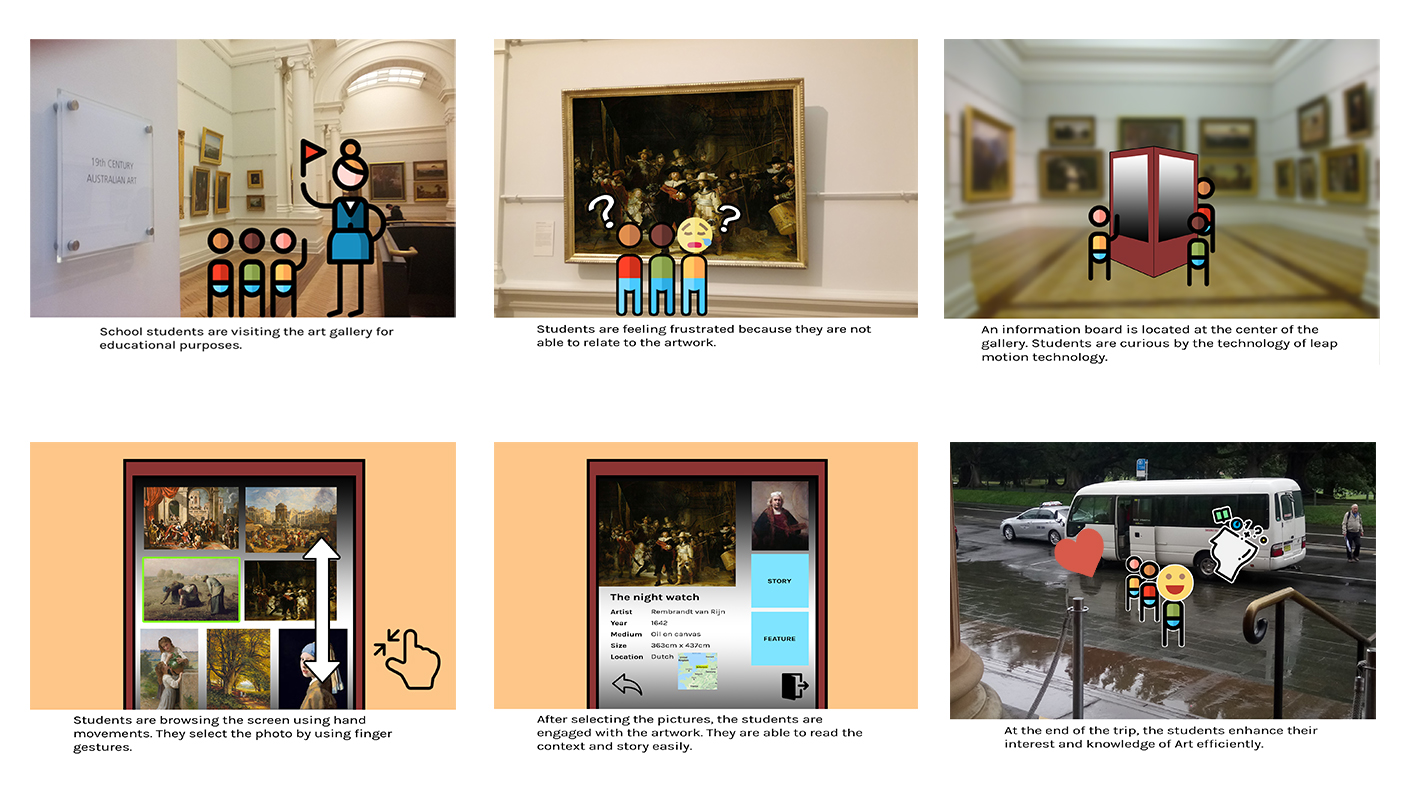
STORYBOARD TWO (IBEACON) : As one of our respondents for sightseeing purposes stated that she did not observe the work carefully, but she suggested that there was a tour guide to explain it to her. There were also respondents who said that they did not like abstract painting and Aboriginal art because they did not understand it, ,and said that although there seems to be a lot of interactive facilities inside, for example, she was disappointed about a facility that putting a hand into it would become the interaction of the monkey's hand because she did not know how to use it. The above which proved that the introduction of the artwork was not enough or not attractive enough. This has also triggered a series of chain reactions, including the fact that tourists have changed their focus from appreciating the artworks to become take photographs and gathering lead to create noise that affects other people. Other interviewees also stated that they like to watch Classical art because it allows them to feel the emotions and stories behind the artwork throughout its background, color and characters. This proves that apart from enjoy the artworks, visitors also prefer to learn more information about the artworks. In addition, among the several students in our research, they went to Art gallery for the purpose of collect information and inspiration for their assessment, therefore an effective explanation can help the growth of academic research for local students. Therefore, I consider to merge the iBeacon technique into the gallery experience. When people come to art gallery, they get the message from the entrance. It is such as a tour guide could tell lead them to go through the gallery, with all the explanation for each artwork. It is also interactive, people and interact through messages, give like. It could also gather data by the star rating and message on the way out.
